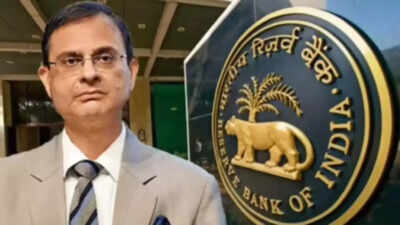ARTICLE AD BOX

NEW DELHI: The Reserve Bank of India (RBI) on Friday slashed the repo rate by 50 basis points to 5.5%, marking its third rate cut this year. Alongside, the Cash Reserve Ratio (CRR) has also been reduced by 1% to 3%, injecting Rs 2.5 lakh crore into the banking system. While this move brings relief for borrowers—home, auto, and other loans are expected to get cheaper soon—it spells concern for fixed deposit (FD) investors. As banks begin to transmit the repo rate cut, FD interest rates are likely to decline further in the coming months.
What is the repo rate?
The repo rate is the interest rate at which the Reserve Bank of India (RBI) lends money to banks for short-term needs. When the repo rate is lowered, banks can borrow funds at a cheaper rate. This often leads to lower fixed deposit (FD) interest rates for customers.
Why FD rates are falling
After two earlier cuts of 25 basis points each in February and April, the latest move has prompted banks to cut FD rates even more aggressively. "FD rates have been reduced in the range of 30-70 bps since February 2025," according to an SBI Research. Although FD rates aren't directly linked to the repo rate, they are influenced by it through changes in the marginal cost of lending (MCLR), which banks use to determine interest rates.
What should FD investors do now?
1. Lock in current FD rates: FD rates are still relatively attractive at several banks, with some Small Finance Banks offering 8% or more. Investors should consider locking in these higher rates now before banks revise them downwards. To stay safe, choose banks covered under the ₹5 lakh deposit insurance limit.2. Opt for medium to long-term FDs: Since short-term FD rates may fall sooner, longer-term deposits can help lock in higher returns for a longer duration, especially as interest rates are expected to remain low in the near future.3. Explore corporate FDs with caution: If you're willing to take on some risk for higher returns, corporate FDs may be an option. They typically offer better rates than traditional bank FDs, but they also come with higher risk, so review the company’s credit rating and financial health before investing.



.png)
.png)
.png)
















 12 hours ago
3
12 hours ago
3









 English (US) ·
English (US) ·